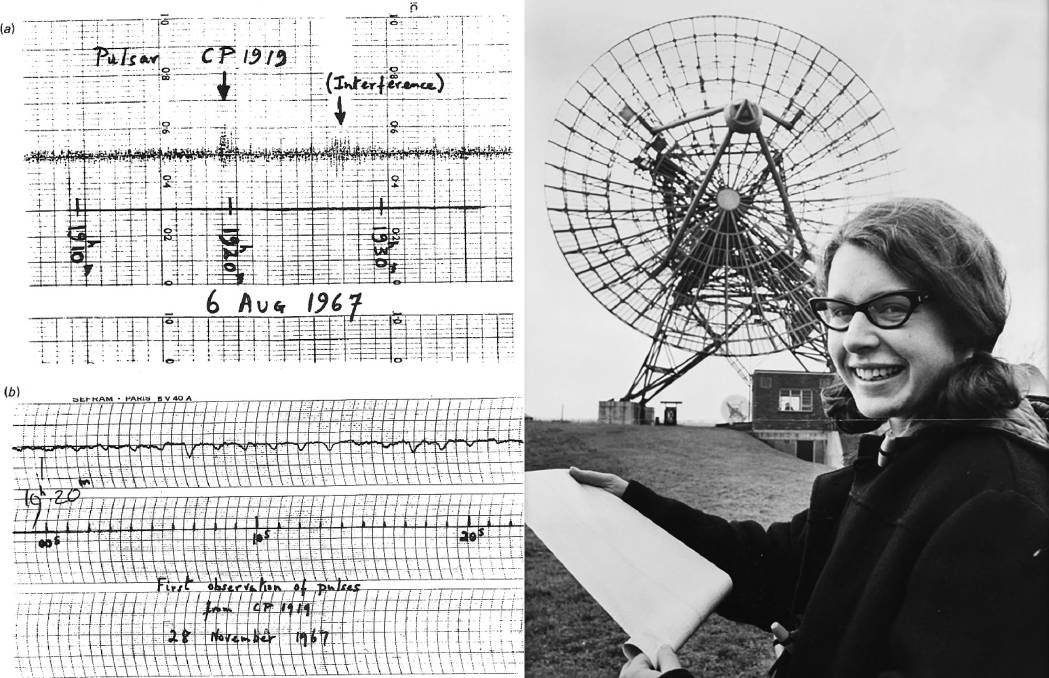Gravitational Waves & The Shoulders of Giants
Published:
It is an exciting time to be a physicist! Physicists are lucky to get extraordinary scientific results maybe once a year or every few years; in the past week, two major scientific breakthroughs have been made. Here I want to attempt to illuminate the significance of my favorite. I’ve always had a sweet spot for black holes.
Pulsar Timing Arrays and Gravitational Waves
Gravitational waves are one of the most profound predictions of Einstein’s General Theory of Relativity. General Relativity (GR) was an awakening in the history of modern physics. Einstein’s contributions – many of which he made just in his early twenties – disturbed the dogma of physics that was laid forth by Newton centuries before. Einstein’s theories visited him in his thoughts, and his mathematical prowess allowed him to translate these daydreams into rigorous theoretical results that were then experimentally verified. Physical intuition like this comes only once in a few centuries.
GR is a theory of geometry. In GR, space and time are unified into spacetime, which is the domain in which we all live. Spacetime is flexible – it stretches, curves, and shrinks at the will of the matter that moves throughout it. What we experience as “gravity” is simply these distortions in spacetime. Heavy objects distort spacetime a lot, inducing motion for less massive objects around them (example: the sun and planets in the solar system). Even heavier objects can distort spacetime to the point in which it punctures (example: black hole), and lighter objects distort spacetime to the extent in which it is not meaningful (example: you and me). What physics has additionally told us since the time of Newton is that waves and oscillations are ubiquitous at all scales. Gravity is no exception here. When matter moves, it produces gravitational waves which distort and stretch spacetime as they go, with no shore to interrupt their path. My fingers typing this are producing an incredibly weak signal of gravitational waves; in order of any chance to be detected, much more energetic events must occur. And what we have just discovered, in short, is that we are mere tiny fish in a sea of interminable gravitational waves, spanning much further than the eye can see.
It was only a few years ago that the LIGO and Virgo collaborations published the first direct detection of gravitational waves, which originated from binary black hole mergers. These waves arrived on Earth invisible to our senses but sensitive to our machines. They distorted spacetime on the scale smaller than the size of a proton (<10-15 meters), but we caught them. The discovery resulted in a Nobel prize that was awarded to Kip Thorne, roughly 100 years after Einstein first predicted their existence. If the name “Einstein” being synonymous was “genius” was not enough to show his brilliance, perhaps that the fact that 100 years later we are still doing his homework, can.
As much as theoretical contributions like those of Einstein should be celebrated, they are nothing without rigorous experiment to support them. The recent gravitational wave discovery hinges equally on a particularly important discovery made in the late 1960’s by now Professor Joclyn Bell Burnell. While analyzing data from a newly commissioned radio telescope that she helped build, she noticed a peculiar, periodic signal coming from the same point in the night sky. Initially dismissed as radio interference, these were eventually discovered to be “pulsars”: highly magnetized, rotating neutron stars that shoot radiation out of their poles at astoundingly regular intervals.
Pulsars are the most accurate clocks in the Universe, and unbeknownst to her at the time, Joclyn Bell Burnell’s discovery unlocked a whole new arena to test physical theories in. Interruptions in the periods of these pulsar signals could be used to test theories of physics, notably gravitational waves and Einstein’s GR. However, in sad accordance with the history of scientific practice and achievements, Professor Burnell was not awarded the Nobel Prize for her discovery and her portion of credit was awarded to her advisor, Antony Hewish. In a 2020 lecture at Harvard, she recalled that while Hewish was asked about the science at the time of the discovery, she was asked about more pressing issues such as the color of her hair, her love life, and was even asked to undo buttons on her shirt for photographs.

(Left) The pulsar chart in which Joclyn Bell Burnell identified the "interference" that resulted in the discovery of pulsars. (Right) Joclyn Bell Burnell at the Mullard Radio Astronomy Observatory at Cambridge University in 1968.
Using pulsars, researchers at the NANOGrav collaboration, among others, turned our local corner of the Universe into one massive antenna to detect gravitational waves by combining signals from multiple radio telescopes. The collaboration collected data from 68 pulsars over the course of 15 years: an incredibly meticulous and painstaking endeavor. What their data conveyed was that some of the pulsar signals were stretched and others were shrunk, and this correlated exactly with where the pulsars were in the sky and their angular separation. Moreover, the distortions themselves were periodic – akin to a quiet hum floating in and out of existence, distorting signals when it’s loud and leaving them uninterrupted when it’s quiet. The hum permeates everywhere throughout the Universe for all time. The hum is – unmistakably – gravitational waves distorting the fabric of reality itself. Adam Frank at The Atlantic put it quite eloquently:
- “The whole universe is humming. Actually, the whole universe is Mongolian throat singing. Every star, every planet, every continent, every building, every person is vibrating along to the slow cosmic beat.”
The likely source of this beat is binary supermassive black hole mergers. That is, pairs of black holes at the center of their respective galaxies, each weighing millions to billions times the mass of our Sun, spiraling inwards to inevitably collide and become one. In the past, my research was to use machine learning to weigh such objects. There are other more exotic and interesting scenarios (as if colliding supermassive black holes weren’t cool enough), but to be certain it will take some more time, effort, and thoughts from people much more brilliant than myself. And if it is not this generation of scientists, then it will be a discovery for the next, with extraordinary foresight thanks to the efforts of researchers today.
On the Shoulders of Giants
In a letter to his rival Robert Hooke in the late 1600’s, Newton wrote:
- “What Des-Cartes did was a good step. You have added much several ways, & especially in taking the colours of thin plates into philosophical consideration. If I have seen further it is by standing on the shoulders of Giants.”
Discoveries like this alter the perception that people have of the world. Einstein told us that space and time were not absolute, and unlocked a Pandora’s box of research efforts which continues to unearth our understanding of reality. The last time something remotely similar to this discovery was made was the discovery of the cosmic microwave background (CMB), a microwave radiation that glows uniformly throughout the Universe, in the mid 1960s. The CMB was a smoking gun for the origin of the Universe beginning with a Big Bang (see more here). It is incredibly exciting to think about what this discovery will yield in refining our modern theories of cosmology.
Einstein was able to correct the flaws of his predecessor not by operating in a vacuum, but by building upon the strong – albeit flawed – foundation laid by Newton. Joclyn Bell Burnell stood on similar shoulders, and her own shoulders allowed us to see further than we ever have before. It’s always been a goal of mine to “humanize” science, and despite how detached it may sound that we’ve discovered a sea of endless gravitational waves (likely) sourced by supermassive black hole collisins billions of years ago, it was the efforts of people – and our predecessors – that made this happen, and everyone’s contributions should be acknowledged and celebrated.
